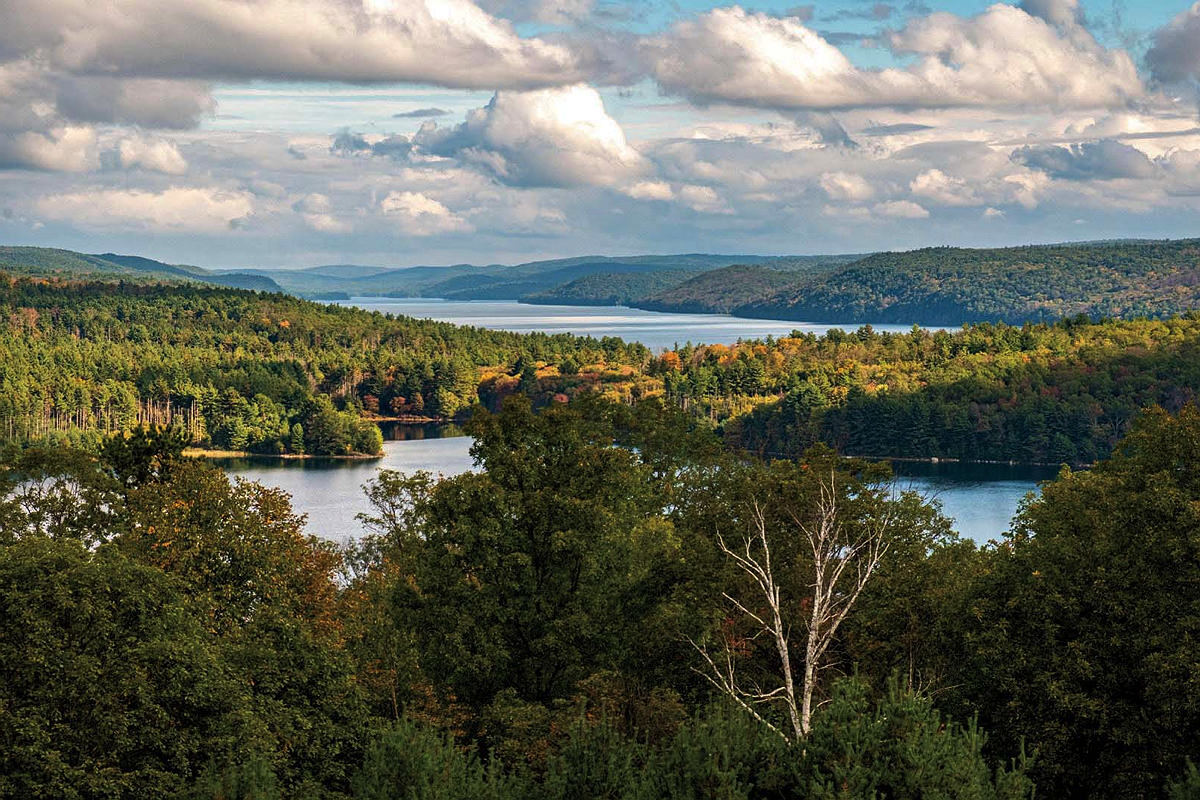Mysteries Of Quabbin Reservoir’s Ghost Towns

Have you ever wondered about the hidden stories beneath the waters of Quabbin Reservoir? This massive body of water in Massachusetts holds secrets of ghost towns submerged long ago. Before the reservoir existed, four towns—Dana, Enfield, Greenwich, and Prescott—thrived in the Swift River Valley. These towns were disincorporated and flooded to create a water supply for Boston. Today, the reservoir is a peaceful spot for hiking, fishing, and wildlife watching. Yet, beneath its calm surface lie remnants of homes, schools, and churches. Join us as we uncover the fascinating history and eerie beauty of Quabbin Reservoir's ghost towns.
Mysteries of Quabbin Reservoir's Ghost Towns
Quabbin Reservoir, located in central Massachusetts, is a massive body of water that hides a fascinating secret beneath its surface. In the 1930s, four towns were flooded to create this reservoir, leaving behind ghost towns that spark curiosity and wonder. Let's dive into the mysteries of these submerged places.
Enfield: The Largest Lost Town
Enfield was the largest of the four towns submerged to create Quabbin Reservoir. This bustling community had a rich history and vibrant life before it was sacrificed for the greater good.
- Enfield Town Hall: This grand building once served as the heart of Enfield, hosting town meetings and community events. Now, it lies silent beneath the waters, a testament to the town's former glory.
- Enfield High School: The school where many young minds were shaped now rests at the bottom of the reservoir. Imagine the classrooms, hallways, and playgrounds that once echoed with laughter and learning.
- Enfield Cemetery: This resting place for many of Enfield's residents was relocated before the flooding. However, the original site still holds a sense of mystery and reverence.
Dana: A Town of Industry
Dana was known for its industrious spirit, with mills and factories that powered the local economy. The town's remnants tell a story of hard work and community.
- Dana Common: The central hub of Dana, where townsfolk gathered for markets and social events. Today, it's a submerged memory of a once-thriving community.
- Dana Mills: These mills were the lifeblood of Dana, providing jobs and goods for the town. Now, they lie in ruins beneath the reservoir, a ghostly reminder of the town's industrious past.
- Dana Church: This place of worship was a cornerstone of the community. The church's steeple, once reaching towards the heavens, now lies hidden beneath the water.
Greenwich: A Town of Resilience
Greenwich was a town that exemplified resilience and community spirit. Despite its small size, it had a big heart, and its submerged remains tell a story of perseverance.
- Greenwich Town Hall: This building was the administrative center of Greenwich, where important decisions were made. Now, it rests quietly beneath the reservoir, a symbol of the town's governance.
- Greenwich Schoolhouse: The schoolhouse where children learned and played is now a submerged relic. Imagine the lessons taught and friendships formed within its walls.
- Greenwich Farms: The farmlands of Greenwich were the backbone of the town's economy. These fields, now underwater, once provided sustenance and livelihood for many families.
Prescott: A Town of Community
Prescott was a close-knit community where everyone knew each other. The town's submerged remnants reflect the strong bonds and shared experiences of its residents.
- Prescott General Store: This store was the heart of Prescott, where residents gathered to shop and socialize. Now, it lies beneath the reservoir, a ghostly reminder of daily life in the town.
- Prescott Post Office: The post office was a vital link to the outside world, connecting Prescott to the rest of the country. Its submerged remains tell a story of communication and connection.
- Prescott Meeting House: This gathering place for town meetings and events was central to Prescott's community life. Today, it rests quietly beneath the water, a symbol of the town's unity.
Quabbin Reservoir's ghost towns hold a unique place in history, their submerged remnants telling stories of life, community, and sacrifice. Exploring these mysteries offers a glimpse into a past that, while hidden, is not forgotten.
Echoes of the Past
Quabbin Reservoir's ghost towns offer a unique glimpse into history. These submerged communities, once bustling with life, now rest quietly beneath the water. Exploring the area, you can feel the presence of those who once called these towns home. The reservoir itself is a testament to human ingenuity and sacrifice, providing water to millions while preserving a piece of the past.
Visiting Quabbin is more than just a trip; it's a journey through time. Walking the trails, seeing the remnants of old buildings, and learning about the lives of former residents brings history to life. It's a reminder of how communities adapt and change, leaving behind stories waiting to be discovered.
Whether you're a history buff or just love a good mystery, Quabbin Reservoir's ghost towns are worth exploring. They remind us that even in progress, echoes of the past remain.

